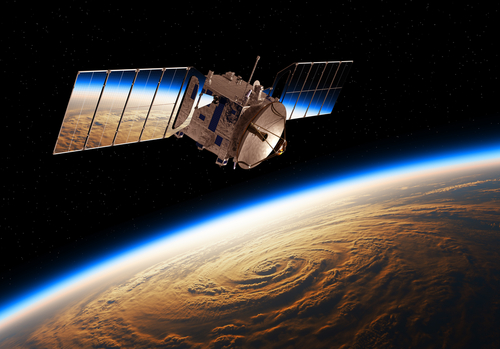Solar Orbiter: Spacecraft to leave UK bound for the Sun
It’s taken a little longer than expected but the Solar Orbiter probe is built and ready to begin testing.
UK engineers are putting the finishing touches to the satellite this week before sending it to Germany to begin a year-long test campaign.
Such attention to detail is necessary because of the punishing conditions the spacecraft will experience when studying our star’s inner workings.
SolO is going to fly to within 43 million km of the solar surface.
In doing so, the heatshield on the front of the European Space Agency (Esa) satellite will have to cope with temperatures of up to 600C.
If you’re thinking, “but I thought we just launched a probe to study the Sun” – you’d be right. That was the US space agency’s (Nasa) Parker satellite, which left Earth in August.
The two missions actually have very similar goals – and on many occasions will be working hand in glove, trying to understand what drives our star’s activity.
Parker will do it by going even closer than SolO, to within 7 million km of the solar surface.
This will allow the American probe to sit directly in and sample the Sun’s outer atmosphere, or corona. This is the place where the “solar wind” – the storm of charged particles (plasma) and the magnetic fields they carry – get accelerated and blown out into space.
Solar Orbiter, on the other hand, will stand back somewhat to provide the wider context for what Parker is sensing.
Daniel Müller is the Esa SolO project scientist: “The overarching science question we’re trying to tackle is about how the Sun creates this plasma bubble around it, and how solar activity changes in time and also changes this bubble we all live in.”
SolO can make very similar measurements to Parker from its “gentler” vantage point. But, crucially, it will also be taking pictures. The Esa mission’s heatshield has peepholes that give telescopes an opportunity to spy the Sun’s broiling surface.
Parker can’t do this. If any telescope tried to look past its shield, the hardware would rapidly melt in temperatures that exceeded 1,000C.
“We go close enough with Solar Orbiter that we can co-locate with some surfaces of the Sun,” explains Helen O’Brien, an instrument manager from Imperial College London. “We’ll get to hover over a section to see how it develops, plus how the atmosphere coming out of that region behaves as it goes past us in space.”
And there’s another aspect to SolO’s mission which is very different to Parker. The European satellite is going to use a series of flybys of Venus to gravitationally manoeuvre itself into an inclined orbit so that it can look down on the Sun’s poles.
This would be a first – we’ve never had pictures of these regions.
“Although we can’t see them, the poles are where the Sun’s magnetic field is really important,” says Imperial’s Tim Horbury, a principal investigator on SolO. “The Sun’s magnetic field is central to its dynamics; the magnetic field drives all the activity on the Sun.”
Solar Orbiter was due to launch this year along with Parker, but a number of technical set-backs mean the European probe won’t now set off until February 2020.
The delay is disappointing but it shouldn’t harm the research. SolO and Parker are still expected to be able to conduct joint science for a number of years.
And at the end of it all, scientists should have a much clearer idea of the underlying motors for the Sun’s 11-year cycles of behaviour.
That’s important because the biggest outbursts from our star will rattle the Earth’s magnetic field. In the process, communications may be disrupted, satellites in orbit around the planet can be knocked offline, and power grids will be vulnerable to electrical surges.
Missions like SolO and Parker should improve the tools used for forecasting these kinds of disturbances.
Solar Orbiter has been assembled by Airbus in Stevenage. There’s satisfaction at the aerospace giant that the build phase of the project has come to a close.
Engineers have had to work hard to keep SolO as clean as possible, ensuring there is nothing on the spacecraft that might introduce electrical or magnetic interference to the probe’s 10 instruments – and to ward off dust. “If you get dust on the telescopes’ lenses and then expose them to the Sun, you’ll effectively bake that dust on to their surfaces, and you’ll lose science,” says integration manager Michelle Sprake. “We’ve had challenges and have had to come up with solutions.”
The Stevenage team is currently boxing up the probe for shipment to the IABG company in Munich where it will be alternately baked and frozen (parts of the probe in shadow in space can go down to minus 180C) to demonstrate its readiness for thermal extremes.
SolO will also be shaken, and “shouted at” by big loudspeakers. This will prove it can handle the violence of riding on top of a rocket.
Assuming Solar Orbiter comes through these trials, the satellite will then be despatched to Florida where Nasa has booked an Atlas vehicle to hurl the mission towards the Sun.

